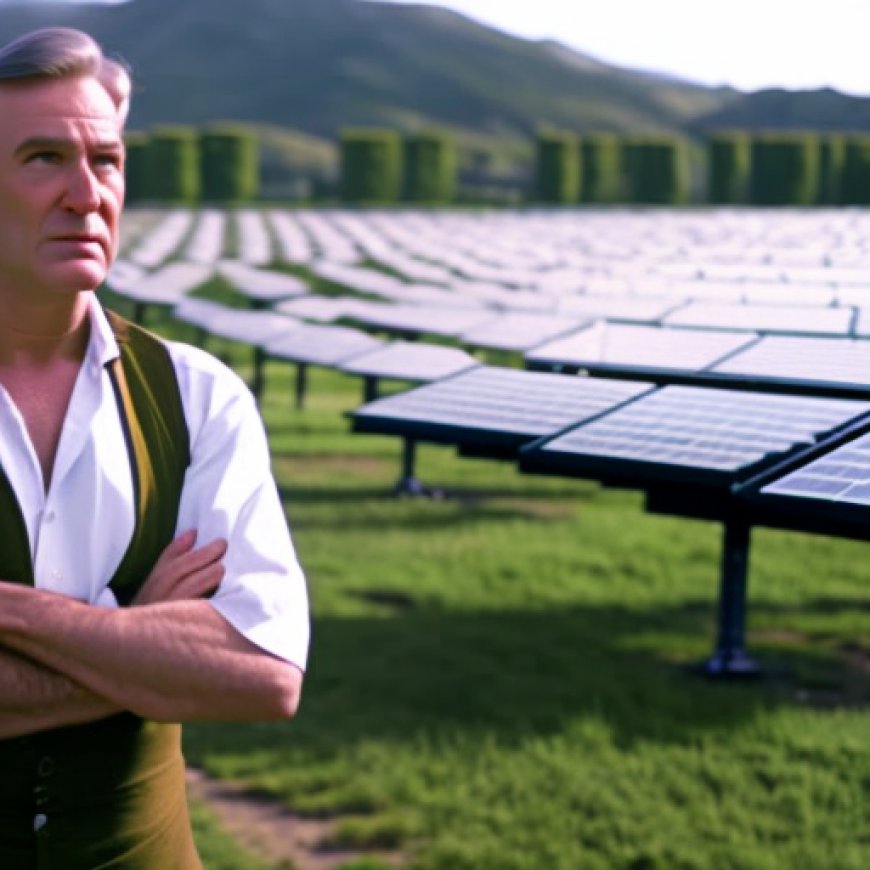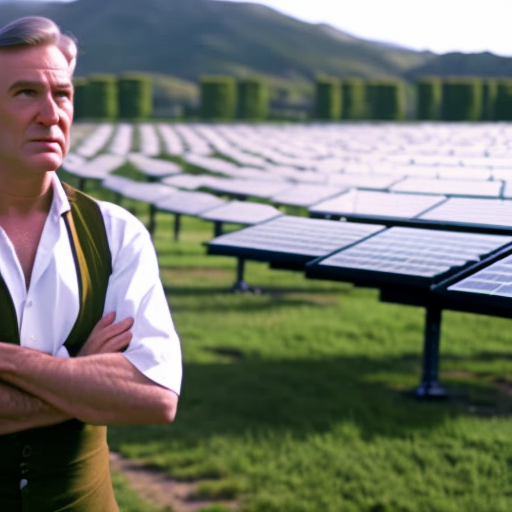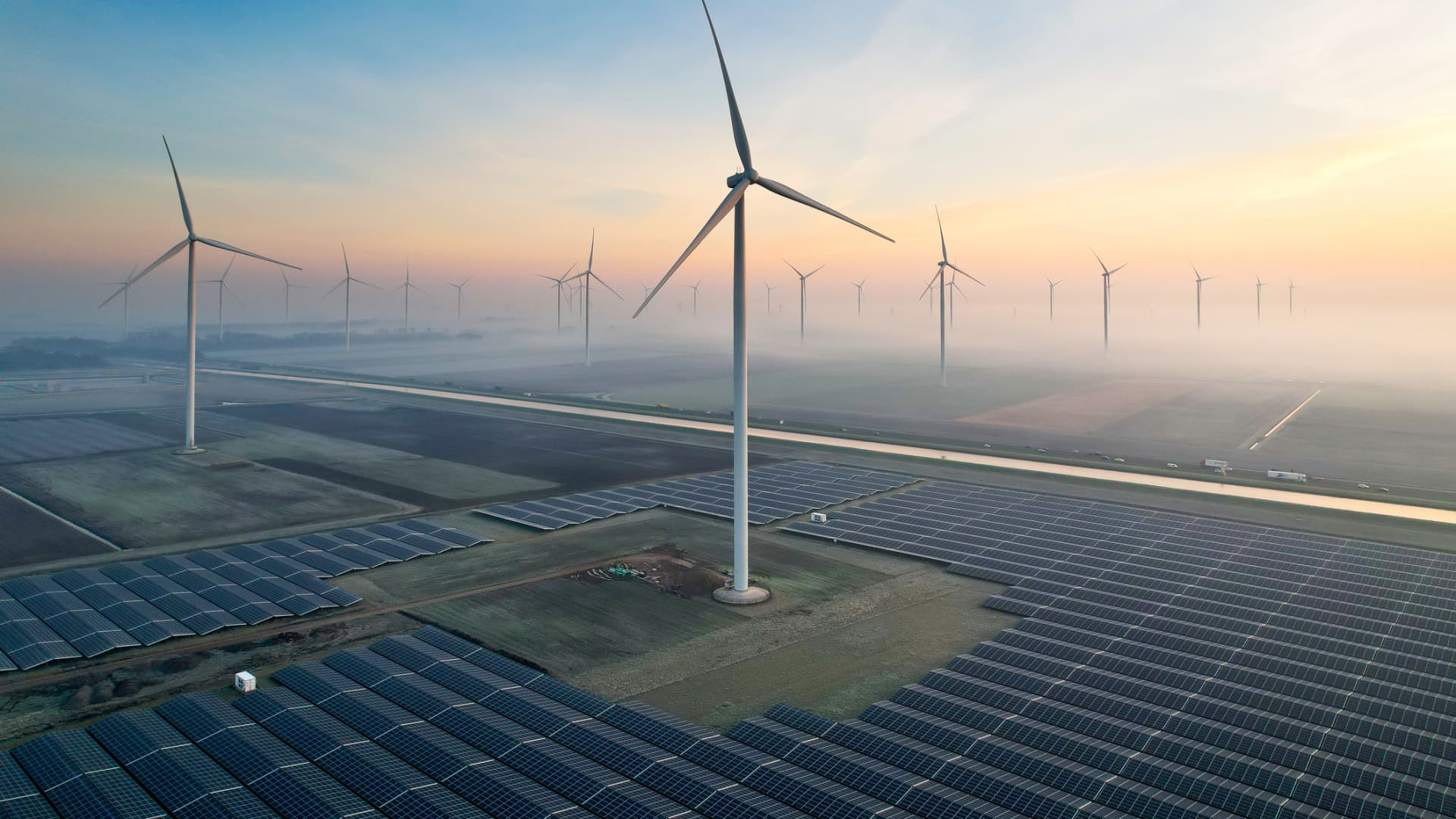A shift to renewable energy is ‘hopeless’ without efficiencies, environmentalist says
A shift to renewable energy is 'hopeless' without efficiencies, environmentalist says CNBC


Renewed Focus on Cutting Energy Waste Needed for Renewable Transition, Says Bertrand Piccard

Sustainable Development Goals (SDGs)
- Goal 7: Affordable and Clean Energy
- Goal 9: Industry, Innovation, and Infrastructure
- Goal 11: Sustainable Cities and Communities
- Goal 13: Climate Action
Explorer and environmentalist Bertrand Piccard has called for a renewed focus on cutting energy waste, saying it’s “hopeless” to shift to renewables without improving efficiency.
Around three-quarters of the world’s energy is wasted, Piccard told an “IOT: Powering the Digital Economy” panel moderated by CNBC’s Silvia Amaro. This estimate is based on waste “due to inappropriate behaviour and inefficient systems or infrastructures,” he told CNBC separately via email.
Piccard, who is founder and chairman of the environmental non-profit organization Solar Impulse Foundation, said that “we live in a world of waste.”
“So if we try to replace fossil [fuel] energy with renewables without being efficient, without reducing the consumption, it’s hopeless,” he said.
Another issue Piccard highlighted was that some countries only consider wind and solar as alternative renewable energy sources.
Biogas, produced by the breakdown of organic matter such as food, has been “excluded … from the taxonomy” in Europe, he said, and people also forget about geothermal energy, which uses heat from the earth.
European Commission Report on Renewable Energy Consumption
- Bioenergy: 60%
- Biogas: 10% of bioenergy
- Geothermal energy: 2.7%
- Wind power: 13.2%
- Solar energy: 7.2%
“So we focus on producing more, instead of consuming less, and in the production that we want to do, we forget a lot of different types of renewable energies that we don’t take into consideration,” he said.
As a result of these issues, Piccard said there’s a risk that green energy targets could be missed — as well as the opportunity to produce cheaper energy locally.
“So every country wants … energy independence, more competitiveness, and they forget that the only way to reach it is by energy efficiency, and renewables,” he said.
‘Paradox’ of China’s Solar Panel Oversupply
Piccard also discussed the ongoing concerns about the potential oversupply of solar panels from China to the European market.
“It’s a bit of a paradox because the Chinese have killed the European solar industry, but they have saved the world by showing that solar energy can be so [much] cheaper than anything else,” he said.
There have been growing concerns in Europe and the U.S. that a surplus of subsidized clean energy products, including solar panels, from China is making it more difficult for their domestic industries to compete.
Earlier this month, the European Commission launched two investigations into Chinese solar panel manufacturers that it said could have benefitted from “potentially market distortive” subsidies.
Meanwhile, U.S. Treasury Secretary Janet Yellen said last week that she wouldn’t rule out possible tariffs on China’s green energy exports.
Piccard said it was also important to consider the potential advantages of Chinese solar panels in Europe, however. For example, he said that these panels could be used to generate cheaper electricity in the region, which could then be used to produce hydrogen locally.
“I think, instead of fighting against the obstacle, I think you need to use the situation to see how there will be outcomes on the side of the problem that can be beneficial for us,” he said.
Piccard added that when he initiated the Solar Impulse project over 20 years ago, solar energy was 40 times more expensive than it is today. Solar Impulse 2 became the first solar-powered electric airplane to circumnavigate the globe in 2016.
“So I’m sorry, maybe it’s not politically correct but I’m thanking China for the decrease [in] price of solar energy that has given a wonderful push to renewable energies — we would not be at this point without China,” he said.
SDGs, Targets, and Indicators
| SDGs | Targets | Indicators |
|---|---|---|
| SDG 7: Affordable and Clean Energy | 7.3: Double the global rate of improvement in energy efficiency | – Percentage of energy wasted due to inappropriate behavior and inefficient systems or infrastructures – Energy consumption reduction rate |
| SDG 7: Affordable and Clean Energy | 7.2: Increase substantially the share of renewable energy in the global energy mix | – Percentage of renewable energy consumption from biogas, geothermal energy, wind power, and solar energy – Renewable energy consumption by type |
| SDG 12: Responsible Consumption and Production | 12.5: By 2030, substantially reduce waste generation through prevention, reduction, recycling, and reuse | – Percentage change in waste generation – Waste reduction rate |
| SDG 13: Climate Action | 13.2: Integrate climate change measures into national policies, strategies, and planning | – Inclusion of different types of renewable energies in national policies and strategies – Consideration of biogas and geothermal energy in taxonomy |
1. Which SDGs are addressed or connected to the issues highlighted in the article?
SDG 7: Affordable and Clean Energy
The article discusses the need to improve energy efficiency and the importance of considering different types of renewable energies, such as biogas and geothermal energy, in addition to wind and solar energy. These issues are directly connected to SDG 7, which aims to ensure access to affordable, reliable, sustainable, and modern energy for all.
SDG 12: Responsible Consumption and Production
The article mentions the wastefulness of current energy systems and the need to reduce consumption. This aligns with SDG 12, which focuses on promoting sustainable consumption and production patterns.
SDG 13: Climate Action
The article highlights the risk of missing green energy targets and emphasizes the importance of energy efficiency and renewable energy in combating climate change. These issues are relevant to SDG 13, which aims to take urgent action to combat climate change and its impacts.
2. What specific targets under those SDGs can be identified based on the article’s content?
SDG 7.3: Double the global rate of improvement in energy efficiency
The article emphasizes the need to improve energy efficiency to avoid wasting renewable energy resources. This aligns with SDG 7.3, which targets doubling the global rate of improvement in energy efficiency.
SDG 7.2: Increase substantially the share of renewable energy in the global energy mix
The article highlights the importance of considering different types of renewable energies, such as biogas and geothermal energy, in addition to wind and solar energy. This aligns with SDG 7.2, which aims to increase substantially the share of renewable energy in the global energy mix.
SDG 12.5: By 2030, substantially reduce waste generation through prevention, reduction, recycling, and reuse
The article mentions the wastefulness of current energy systems and the need to reduce consumption. This aligns with SDG 12.5, which targets the substantial reduction of waste generation through prevention, reduction, recycling, and reuse.
SDG 13.2: Integrate climate change measures into national policies, strategies, and planning
The article highlights the importance of considering different types of renewable energies, such as biogas and geothermal energy, in national policies and strategies. This aligns with SDG 13.2, which aims to integrate climate change measures into national policies, strategies, and planning.
3. Are there any indicators mentioned or implied in the article that can be used to measure progress towards the identified targets?
– Percentage of energy wasted due to inappropriate behavior and inefficient systems or infrastructures: This indicator can be used to measure progress towards SDG 7.3, which focuses on improving energy efficiency.
– Energy consumption reduction rate: This indicator can also be used to measure progress towards SDG 7.3, as it reflects the reduction in energy consumption.
– Percentage of renewable energy consumption from biogas, geothermal energy, wind power, and solar energy: This indicator can be used to measure progress towards SDG 7.2, which aims to increase the share of renewable energy in the global energy mix.
– Renewable energy consumption by type: This indicator can also be used to measure progress towards SDG 7.2, as it provides information on the consumption of different types of renewable energies.
– Percentage change in waste generation: This indicator can be used to measure progress towards SDG 12.5, which targets the reduction of waste generation.
– Waste reduction rate: This indicator can also be used to measure progress towards SDG 12.5, as it reflects the rate at which waste is being reduced.
– Inclusion of different types of renewable energies in national policies and strategies: This indicator can be used to measure progress towards SDG 13.2, which focuses on integrating climate change measures into national policies and strategies.
– Consideration of biogas and geothermal energy in taxonomy: This indicator can also be used to measure progress towards SDG 13.2, as it reflects the inclusion of different types of renewable energies in classification systems.
4. SDGs, Targets, and Indicators
| SDGs | Targets | Indicators |
|---|---|---|
| SDG 7: Affordable and Clean Energy | 7.3: Double the global rate of improvement in energy efficiency | – Percentage of energy wasted due to inappropriate behavior and inefficient systems or infrastructures – Energy consumption reduction rate |
| SDG 7: Affordable and Clean Energy | 7.2: Increase substantially the share of renewable energy in the global energy mix | – Percentage of renewable energy consumption from biogas, geothermal energy, wind power, and solar energy – Renewable energy consumption by type |
| SDG 12: Responsible Consumption and Production | 12.5: By 2030, substantially reduce waste generation
Behold! This splendid article springs forth from the wellspring of knowledge, shaped by a wondrous proprietary AI technology that delved into a vast ocean of data, illuminating the path towards the Sustainable Development Goals. Remember that all rights are reserved by SDG Investors LLC, empowering us to champion progress together. Source: cnbc.com
Join us, as fellow seekers of change, on a transformative journey at https://sdgtalks.ai/welcome, where you can become a member and actively contribute to shaping a brighter future.
|








